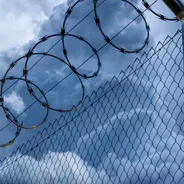The Golden Gate Bridge is one of the most iconic examples of modernist architecture in the world, and remains the pride and joy of any San Fran resident. Linking the northern tip of the San Francisco Peninsula to Marin County, the brick-red suspension bridge is one of the most recognisable in the world, and has been referenced in countless movies, TV shows and songs.
It was once the longest and the tallest suspension bridge in the world, (with a main span of 4,200 feet and height of 746 feet) and is still beloved for its timeless art deco design. But the Golden Gate Bridge also harbours another, more morbid reputation: it is one of the most popular sites in the United States for people to commit suicide.
Suicides have been a regular tragedy at the bridge almost since its inception. The first recorded instance was just three months after the bridge's completion, when a 47-year-old veteran named Harold Wobber took off his coat, stated "This is where I get off" and promptly leapt to his death. Since then, more than 1,600 bodies have been dredged out of the bay, determined by port authorities to have been Golden Gate suicides cases. That means that someone jumps off the bridge every two weeks on average.
The bridge authorities are aware of the scale of the problem: there are a number of posters advertising suicide hotlines posted along the length of the edifice, and many activists have advocated that a suicide net be implemented. One humble bridge worker has even taken the situation into his own hands and has spent decades tirelessly patrolling the bridge to protect vulnerable people from taking their own life.
Ken Hopper is an ironworker who works as a volunteer on his days off, attempting to coax potential jumpers from off the side of the bridge. Ken claims to have saved more than 30 people from taking the fatal plunge over the years. Ken, and a few of his fellow ironworkers, believe they are best equipped to deal with the pressure (not to mention the vertigo) associated with suicide prevention at the bridge. Ken and his fellow "Guardians of the Gate" even bear climbing tools to help them navigate the steel beams and crossways, which can be instrumental when it comes to maintenance and saving lives.
Ken states that the most important tool in his arsenal though, is simple compassion. Just listening to the plight of those people in distress is often enough to make them change their mind. In a 2001 interview, Ken stated: "You try to help them get some peace of mind ... Over the years, [suicide prevention experts] have come to give us seminars. They wind up asking us questions, because all they do is talk to these [suicidal people] on the phone. We deal with them face-to-face."
Ken has also had the misfortune to witness several suicides take place first hand, which has taken a toll on his psyche over the years. Most notably, on January 28, 1993, Ken saw Steven Page, who had just murdered his wife with a shotgun, hurl his three-year-old daughter Kellie off the side of the bridge before leaping off himself. On another occasion he saw a young man fall to his death after he changed his mind, clinging to one of the rails before dropping when his arm gave way. "There's no describing how helpless you feel," Ken stated, when describing the experience of watching someone fall.
At one point, Ken felt like the pressure was getting to be too much for him, and thus he decided to take some time off from suicide prevention and seek therapy for himself. "It wasn't one incident," he stated, "it was a culmination. I tried to stuff 'em all in this bag. The bag gets so big, it bursts."
Hopper also has to deal with the angst and uncertainty of never knowing whether he truly has saved a life. After all, there's nothing to say that an averted jumper won't try again somewhere else the next day. Just despite all this, Ken and his colleagues keep at it. They see it as their solemn duty. As Ken himself says "We're the only ones dumb enough to do it ... Once in a great while one of the guys will get a letter or note from someone they talked down. I've known that to happen only two or three times. When a guy gets a letter like that, it's a treasure; it's like gold."
If you or anyone you know is struggling with suicidal feelings, depression, or just loneliness and uncertainty, then please don't hesitate to contact either the Samaritans (116 123) or the National Suicide Prevention Lifeline (1-800-273-8255).












